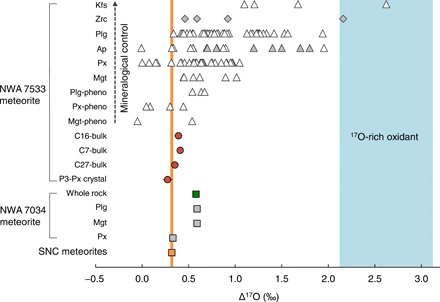Fig. 4. Plot showing the Δ17O variability of SNC meteorites and NWA 7533/7034 meteorites.

The Δ17O value of +0.318‰ for SNC meteorites anchored by the orange column is from Ali et al. (41), and those of whole-rock aliquot and the mineral separates of the NWA 7034 meteorite are from Agee et al. (4) and Ziegler et al. (40), respectively. Also shown are the Δ17O values of components from the NWA 7533 meteorite, including one pyroxene crystal (i.e., P3) and three basaltic clasts (i.e., C16, C7, and C27) measured by laser fluorination (±0.03 to 0.05‰, 1 SD; data file S4), and those analyzed by secondary ion mass spectrometry (SIMS; ± 0.5‰, 2 SD; data file S3) for minerals in six well-crystallized clasts (C11, C16, C4, C7, C18, and C27) in this study (the white triangles), as well as zircons from Nemchin et al. (42) (the gray diamonds) and apatites from Bellucci et al. (45) (the gray triangles), The in situ data have been aligned following a mineralogical control: phenocrysts (pheno), magnetite (Mgt), pyroxene (Px), apatite (Ap), plagioclase (Plg), zircon (Zrc), and K-feldspar (Kfs). Note that the highest Δ17O value from SIMS measurements on K-feldspar (i.e., +2.6 ± 0.5‰) has been assumed to represent that of the 17O-rich oxidant (the light blue field).
